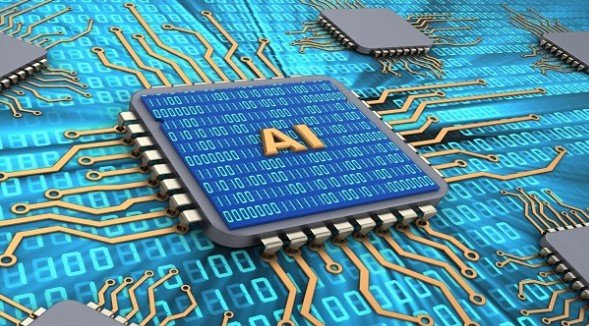
What is AI Hardware?
Introduction to AI Hardware
Artificial Intelligence (AI) has revolutionized numerous industries by enabling machines to perform tasks that typically require human intelligence. However, behind the scenes of AI’s astonishing capabilities lies a critical component that powers these intelligent systems—AI hardware. AI hardware refers to the specialized devices and components designed specifically to handle the demanding computational needs of AI algorithms. This hardware is the backbone that supports AI’s immense data processing, learning, and decision-making capabilities, ensuring that AI applications run efficiently and effectively.
Components of AI Hardware
AI hardware is a complex ecosystem composed of various specialized components that work together to enable AI functionalities. The key components include processors, memory, storage, and power management systems, each playing a crucial role in the overall performance and efficiency of AI systems.
- Processors for AI: CPUs, GPUs, TPUs: The central processing unit (CPU) is traditionally known as the brain of the computer, but in AI applications, the graphics processing unit (GPU) and Tensor Processing Unit (TPU) have become indispensable. GPUs, originally designed for rendering graphics, are now widely used in AI due to their ability to handle parallel processing tasks efficiently. TPUs, on the other hand, are specialized processors developed by Google to accelerate machine learning tasks.
- Memory and Storage Solutions for AI: AI workloads require vast amounts of data to be processed in real-time. High-speed memory and storage solutions are essential to ensure that data can be accessed and processed quickly. Technologies like High Bandwidth Memory (HBM) and Non-Volatile Memory Express (NVMe) play a significant role in optimizing AI performance.
- Power Efficiency in AI Hardware: Power consumption is a critical consideration in AI hardware design. As AI systems become more complex, the need for power-efficient hardware becomes more pressing. Modern AI hardware is designed to balance performance with power consumption, using techniques like dynamic voltage and frequency scaling (DVFS) to optimize energy usage.
Types of AI Hardware
AI hardware can be broadly categorized into general-purpose and specialized hardware. General-purpose hardware includes standard CPUs and GPUs that can handle a wide range of tasks, including AI workloads. However, specialized AI hardware, such as TPUs, FPGAs, and ASICs, is designed specifically for AI applications, offering superior performance and efficiency for these tasks.
- General-purpose AI hardware: This includes traditional computing hardware that has been adapted to handle AI workloads. While not specifically designed for AI, these components are versatile and can be used for a variety of computing tasks.
- Specialized AI hardware: This category includes hardware that is purpose-built for AI tasks, such as TPUs, FPGAs, and ASICs. These components are optimized for the specific computational requirements of AI, delivering higher performance and efficiency than general-purpose hardware.
AI Accelerators
AI accelerators are specialized hardware components designed to speed up AI tasks, particularly in machine learning and deep learning applications. These accelerators work alongside traditional processors to handle specific tasks more efficiently.
- Role of AI Accelerators: AI accelerators are essential for enhancing the performance of AI systems. They offload specific tasks from the CPU, allowing it to focus on other operations while the accelerator handles the computationally intensive parts of AI workloads.
- Types of AI Accelerators: GPUs, TPUs, FPGAs, ASICs: The most common types of AI accelerators include GPUs, TPUs, FPGAs, and ASICs. Each type has its unique advantages and is suited for different AI tasks. For example, GPUs are highly effective for parallel processing, making them ideal for training deep learning models, while TPUs are optimized for running specific machine learning algorithms at high speeds.
Graphics Processing Units (GPUs)
GPUs have become a cornerstone of AI hardware, thanks to their ability to perform massive parallel computations. Initially designed for rendering images in video games, GPUs have found a new role in AI, particularly in training deep learning models.
- Evolution of GPUs in AI: Over the years, GPUs have evolved from their primary function of rendering graphics to become one of the most critical components in AI hardware. Their ability to perform thousands of operations simultaneously makes them ideal for processing the large datasets required in AI.
- Benefits of Using GPUs for AI: GPUs are particularly effective in handling the matrix operations that are fundamental to many AI algorithms. Their parallel processing capabilities allow for faster training of deep learning models, significantly reducing the time required to develop AI applications.
Tensor Processing Units (TPUs)
TPUs represent a significant advancement in AI hardware, offering a level of performance and efficiency tailored specifically for AI workloads.
- What Are TPUs?: Tensor Processing Units are specialized chips developed by Google to accelerate machine learning tasks, particularly those involving deep learning. TPUs are designed to handle the specific computational requirements of tensor operations, which are at the heart of many AI algorithms.
- Google’s Role in Developing TPUs: Google introduced TPUs to improve the efficiency of its AI services. These chips have since become a vital part of Google’s AI infrastructure, powering everything from search algorithms to language translation services.
- Applications of TPUs in AI: TPUs are used in a wide range of AI applications, from image recognition to natural language processing. Their ability to process large amounts of data quickly makes them ideal for tasks that require real-time decision-making.
Field-Programmable Gate Arrays (FPGAs)
FPGAs offer a flexible and customizable approach to AI hardware, allowing developers to tailor the hardware to specific AI tasks.
- Understanding FPGAs: FPGAs are integrated circuits that can be configured by the user after manufacturing. This flexibility allows them to be optimized for a wide range of AI applications, from data processing to algorithm acceleration.
- Advantages of FPGAs in AI: One of the key advantages of FPGAs is their ability to be reprogrammed for different tasks. This makes them ideal for AI applications that require specialized processing but may need to adapt to new algorithms or data types over time.
- Use Cases of FPGAs in AI: FPGAs are used in various AI applications, including real-time video processing, autonomous systems, and financial modeling. Their versatility and performance make them a popular choice for industries that require high-performance AI solutions.
Application-Specific Integrated Circuits (ASICs)
ASICs represent the pinnacle of specialization in AI hardware, offering unmatched performance for specific AI tasks.
- What Are ASICs?: Application-Specific Integrated Circuits are custom-designed chips created for a specific task. In the context of AI, ASICs are used to perform particular AI computations with maximum efficiency.
- How ASICs Are Used in AI: ASICs are designed to perform specific AI tasks, such as the training or inference of deep learning models. Their highly specialized nature allows them to outperform general-purpose hardware by a significant margin in these tasks.
- Comparing ASICs with Other AI Hardware Types: While ASICs offer superior performance for specific tasks, they lack the flexibility of FPGAs and GPUs. This makes them ideal for applications where the AI workload is well understood and unlikely to change, such as in large-scale data centers.
AI Hardware for Edge Computing
As AI moves closer to the source of data generation, edge computing has emerged as a critical area of AI hardware development.
- Edge Computing vs. Cloud Computing: Edge computing involves processing data near the source of data generation rather than in a centralized cloud. This reduces latency and bandwidth usage, making it ideal for real-time AI applications.
- AI Hardware for Edge Devices: Edge devices, such as sensors and IoT devices, require specialized AI hardware that is compact, power-efficient, and capable of processing data in real-time. AI chips for edge computing are designed to meet these requirements, enabling intelligent processing at the edge of the network.
Neuromorphic Hardware
Neuromorphic computing represents a paradigm shift in AI hardware, inspired by the structure and function of the human brain.
- What is Neuromorphic Computing?: Neuromorphic computing involves designing hardware that mimics the neural structure of the brain. This approach aims to create more efficient AI systems that can perform complex tasks with lower power consumption.
- Neuromorphic Chips for AI: Neuromorphic chips are designed to process information in a way that is more akin to how the human brain works. This allows them to perform complex tasks, such as pattern recognition and decision-making, with greater efficiency than traditional AI hardware.
Quantum Computing in AI
Quantum computing holds the promise of solving problems that are currently beyond the reach of classical computers, making it a potential game-changer for AI.
- Introduction to Quantum Computing: Quantum computing uses the principles of quantum mechanics to perform computations that would be impossible for classical computers. This makes it a promising technology for advancing AI.
- Quantum Hardware’s Potential in AI: Quantum computers could revolutionize AI by solving complex problems, such as large-scale optimization and cryptography, much faster than classical computers. However, quantum computing is still in its early stages, and significant challenges remain before it can be widely adopted in AI.
Power and Cooling Considerations
The power demands of AI hardware are significant, making power efficiency and cooling critical considerations in hardware design.
- Power Demands of AI Hardware: AI hardware, particularly in large-scale data centers, requires substantial power to operate. This makes power efficiency a crucial factor in hardware design, especially as AI workloads continue to grow in complexity.
- Cooling Solutions for AI Hardware: Effective cooling is essential to prevent overheating and ensure the reliable operation of AI hardware. Advanced cooling solutions, such as liquid cooling and immersion cooling, are increasingly being used to manage the heat generated by high-performance AI systems.
AI Hardware in Data Centers
Data centers are the backbone of modern AI applications, housing the vast amounts of AI hardware needed to process data and train models.
- Role of AI Hardware in Data Centers: AI hardware in data centers powers everything from cloud-based AI services to large-scale machine learning projects. The hardware in these data centers must be scalable and reliable to handle the massive workloads required by modern AI applications.
- Scaling AI Hardware for Large-Scale AI Projects: As AI projects grow in scope, the need for scalable hardware solutions becomes more pressing. Data centers must be equipped with hardware that can be easily scaled up or down to meet the demands of different AI workloads.
AI Hardware for Autonomous Systems
Autonomous systems, such as self-driving cars and drones, rely on AI hardware to process data and make decisions in real-time.
- AI Hardware in Robotics: Robotics is one of the most demanding applications for AI hardware, requiring real-time processing and decision-making capabilities. AI hardware in robotics must be compact, power-efficient, and capable of handling complex tasks like navigation and object recognition.
- AI Hardware in Autonomous Vehicles: Autonomous vehicles are perhaps the most well-known example of AI hardware in action. These vehicles rely on AI hardware to process sensor data, make decisions, and navigate the environment safely.
AI Hardware for Healthcare
The healthcare industry is increasingly adopting AI hardware to improve diagnostics, treatment planning, and patient outcomes.
- Application of AI Hardware in Medical Imaging: AI hardware is being used to analyze medical images, such as X-rays and MRIs, to assist in diagnosis. This hardware allows for faster and more accurate image analysis, leading to better patient care.
- AI Hardware in Drug Discovery and Diagnostics: AI hardware is also being used in drug discovery and diagnostics, helping to identify potential drug candidates and diagnose diseases earlier. This has the potential to significantly speed up the development of new treatments and improve patient outcomes.
Security Considerations in AI Hardware
As AI becomes more integral to critical systems, securing AI hardware against cyber threats is essential.
- Security Challenges in AI Hardware: AI hardware faces unique security challenges, including the risk of hardware-based attacks and the potential for AI models to be compromised. Ensuring the security of AI hardware is crucial to protect sensitive data and maintain the integrity of AI systems.
- Protecting AI Hardware from Cyber Threats: Protecting AI hardware involves a combination of hardware and software solutions. This includes designing hardware with built-in security features and using software to monitor for potential threats.
Future Trends in AI Hardware
The field of AI hardware is constantly evolving, with new technologies and innovations on the horizon.
- Next-Generation AI Chips: The development of next-generation AI chips is focused on improving performance, power efficiency, and adaptability. These chips will be designed to handle increasingly complex AI workloads, paving the way for more advanced AI applications.
- Trends in AI Hardware Development: Key trends in AI hardware development include the rise of edge computing, the integration of AI into everyday devices, and the continued push towards more specialized and efficient hardware solutions.
Challenges in AI Hardware Development
Despite the rapid advancements in AI hardware, several challenges remain.
- Technical Challenges: Developing AI hardware is a complex process that involves overcoming significant technical challenges, including power consumption, heat dissipation, and scalability. As AI workloads become more demanding, these challenges will need to be addressed to ensure continued progress in the field.
- Cost and Accessibility: The cost of developing and deploying AI hardware can be prohibitive, particularly for smaller organizations. Ensuring that AI hardware is accessible to a wider range of users is essential for the continued growth and democratization of AI.
How to Choose the Right AI Hardware
Choosing the right AI hardware depends on a variety of factors, including the specific AI workload, budget, and scalability requirements.
- Criteria for Selecting AI Hardware: Key criteria for selecting AI hardware include performance, power efficiency, scalability, and cost. Understanding the specific requirements of your AI application is crucial to making the right choice.
- Comparing Different AI Hardware Solutions: Comparing different AI hardware solutions involves evaluating their performance, cost, and suitability for your specific AI tasks. This comparison will help you select the hardware that best meets your needs.
For more information, Visit: https://rascheguj.net/
The Impact of AI Hardware on Industry
AI hardware is transforming industries across the board, from finance to manufacturing, by enabling more efficient and powerful AI applications.
- AI Hardware’s Influence on Various Industries: AI hardware is playing a crucial role in driving innovation and efficiency in industries such as finance, manufacturing, and healthcare. By enabling more powerful AI applications, this hardware is helping organizations to stay competitive and meet the demands of the modern economy.
- AI Hardware in Finance, Manufacturing, and More: In finance, AI hardware is being used to power algorithms that can analyze vast amounts of data in real-time, while in manufacturing, it is enabling the automation of complex tasks. These applications are just the beginning of AI hardware’s potential impact across various industries.
Conclusion
AI hardware is the backbone of modern AI, enabling the processing power and efficiency required for advanced AI applications. As AI continues to evolve, the development of more specialized and powerful hardware will be crucial in driving further advancements in the field. The future of AI hardware looks promising, with ongoing innovations poised to unlock new possibilities and applications across a wide range of industries.
FAQs
What is AI hardware?
AI hardware refers to the specialized devices and components designed to handle the computational needs of AI algorithms. This includes processors like GPUs and TPUs, memory solutions, and other components that enable efficient AI processing.
Why is specialized AI hardware important?
Specialized AI hardware is essential because it is optimized for the specific demands of AI workloads, offering better performance and efficiency than general-purpose hardware.
What are TPUs and how are they used in AI?
Tensor Processing Units (TPUs) are specialized processors developed by Google to accelerate machine learning tasks. They are used in various AI applications, including image recognition and natural language processing.
How do GPUs contribute to AI?
GPUs are critical in AI because of their ability to perform parallel processing tasks efficiently. They are especially useful in training deep learning models.
What is the role of FPGAs in AI?
FPGAs are flexible integrated circuits that can be configured for specific AI tasks. They are used in applications that require customized hardware solutions, such as real-time processing.
What are the future trends in AI hardware?
Future trends in AI hardware include the development of next-generation AI chips, increased focus on edge computing, and the integration of AI into everyday devices.




